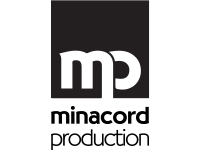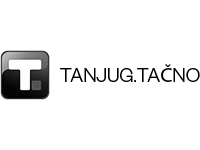Copyright protection
As the fact that there is no developed awareness of the concept of copyright protection in our country cannot be avoided, we would first of all start from the legal definitions of these terms from the Law on Copyright and Related Rights (“Official Gazette of the Republic of Serbia”, No. 104/2009, 99/2011, 119/2012, 29/2016 – Decision of the Constitutional Court and 66/2019) (hereinafter: the Law) which clearly defines the basic terms in the field of copyright protection as follows:
Copyrighted work is the author’s original spiritual creation, expressed in a certain form, regardless of its artistic, scientific or other value, its purpose, size, content and manner of expression, as well as the fact if its content is allowed to be publicly displayed.
As Copyrighted work are considered, in particular:
1) written works (books, brochures, articles, translations, computer programs with accompanying technical and user documentation in any form of their expression, including preparatory material for their creation, etc.);
2) speech works (lectures, speeches, orator expressions, etc.);
3) dramatic, dramatic-musical, choreographic and pantomime works, as well as works originating from folklore;
4) musical works, with or without words;
5) film works (cinematographic and television works);
6) works of fine arts (paintings, drawings, sketches, graphics, sculptures, etc.);
7) works of architecture, applied arts and industrial design;
8) cartographic works (geographical and topographic maps);
9) plans, sketches, models and photographs;
10) theater directing.
Copyright Subject – An author is a natural person who has created a Copyrighted work and represent a copyright holder.
So, in case there is a need to use someone else’s Copyrighted work, first of all, it is necessary to determine who is the copyright holder. Besides the author, the copyright holder may be a person who is not an author, and who has acquired copyright in accordance with the Law. These are most often the heirs of the author and the acquirers of the copyright to whom the author has transferred his copyright in accordance with the law.
The rights of the creator of a Copyrighted work are his moral and commercial rights. Moral rights represent the author’s right to be defined as such, while commercial rights are the author’s right to economic exploitation of the work, which means the author’s right to make a living from his work.
When it comes to authors of musical Copyrighted works, as one are considered a composer, lyricist and arranger of a composition. Their Copyrighted works’ fee from:
– public announcement,
– public performance,
– public broadcasting,
– public rebroadcasting,
– duplication,
– internet use, and other
is paid through the organization for collective copyright protection “Sokoj”, while for any other way of exploiting of musical Copyrighted works it is necessary to obtain the consent of the author and agree on the terms of use.
Public awareness is even more vague when it comes to protection of “rights related to copyrights” that enjoy exactly the same level of protection as copyrights. According to our Law, the subject of rights related to copyrights are:
– the performer’s rights;
– the phonogram producer’s rights;
– the videogram producer’s rights;
– the show producer’s rights;
– the database producer’s rights;
– the right of the first publisher of a free work;
– the right of the publisher of printed publications to a special fee.
Here, we will briefly look at some of the holders of rights related to copyrights that our Law has acknowledged.
Rights of the performer:
Interpretation or performance is a spiritual good that arises from the personal engagement of the performer during the audio, visual or audio-visual performance of the Copyrighted work. The work which is the subject of the performance does not have to be a protected copyrighted work.
For his performance of the Copyrighted work, the performer also has the moral rights and commercial rights we have already discussed.
Singers, dancers, pantomime performers, musicians, conductors and actors enjoy protection in front of the organization for collective protection of performer’s rights – “PI”.
Phonogram producer’s rights (publisher’s rights) – A phonogram is an audio recording of a sound, i.e. a series of sounds on audio recorder, and for its phonogram, the phonogram producer has commercial rights in accordance with the Law. The producer of a phonogram is a natural or legal person by who’s organization and by who’s means the phonogram was made and the one who is responsible for the first audio recording of a sound, i.e. a series of sounds.
Videogram producer’s rights (film producer’s rights) – A videogram is a recording of a film work as well as a certain series of moving images with or without accompanying sound on, i.e. movie records. For his videogram, the film producer (videogram producer) has commercial rights in accordance with the Law. A film producer (producer of a videogram) is a natural or legal person who initiates, raises funds, organizes, manages and takes responsibility for the first movie recording of a film work or a series of moving images accompanied by sound or without sound (videogram).
As we have already mentioned, any exploitation of someone else’s Copyrighted work or subject of rights related to copyrights requires the prior consent of the author and the holder of rights related to copyrights and in case of their consent an Agreement on the manner and terms of use and any eventual restrictions on exploitation, will be agreed.
More on this topic https://www.youtube.com/watch?v=OQqBbIgAiek
For any further inquiries, do not hesitate to contact us at of****@nv****.rs
Contact us
- of****@nv****.rs
- Kolarčeva 8, Belgrade









